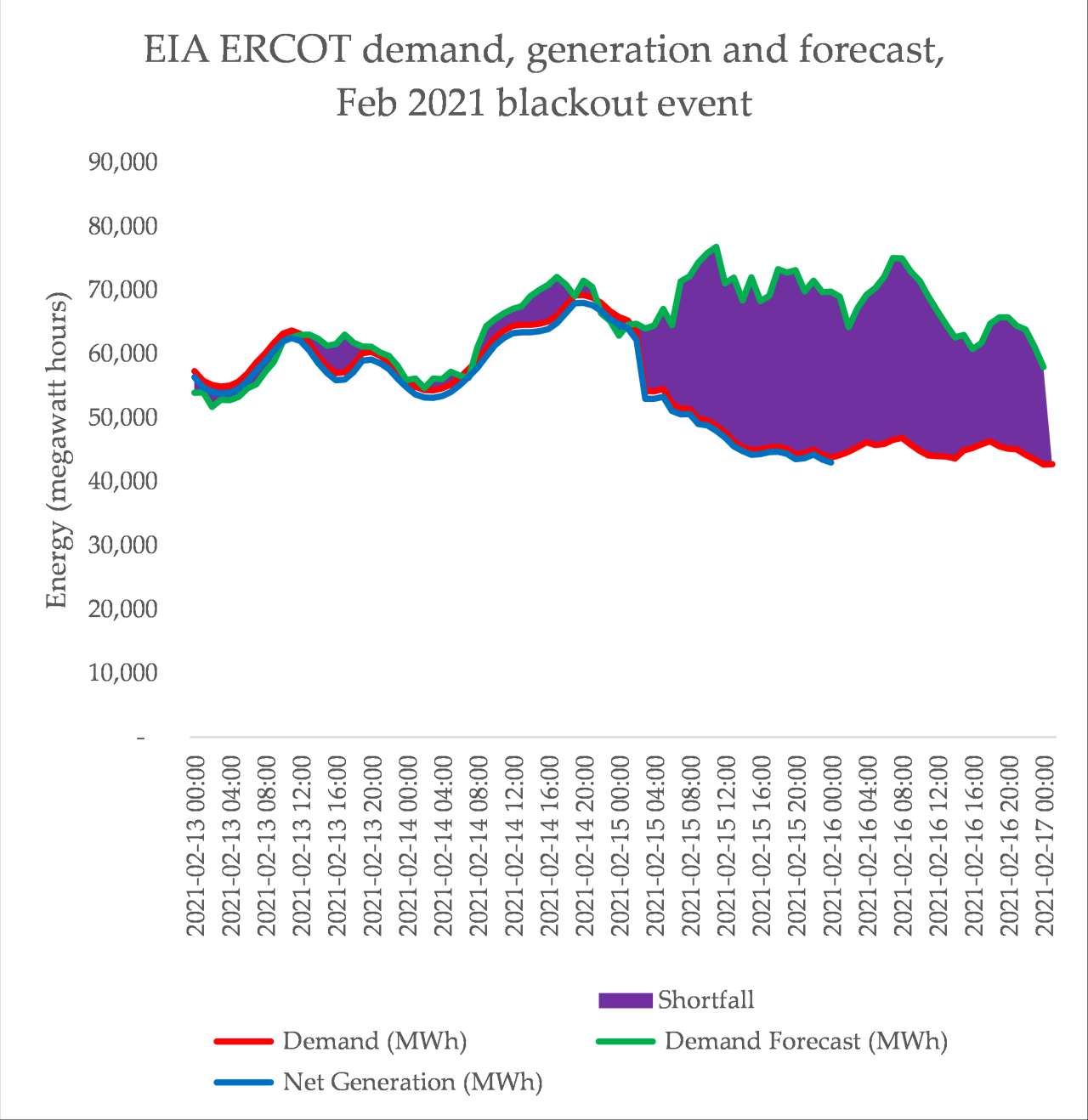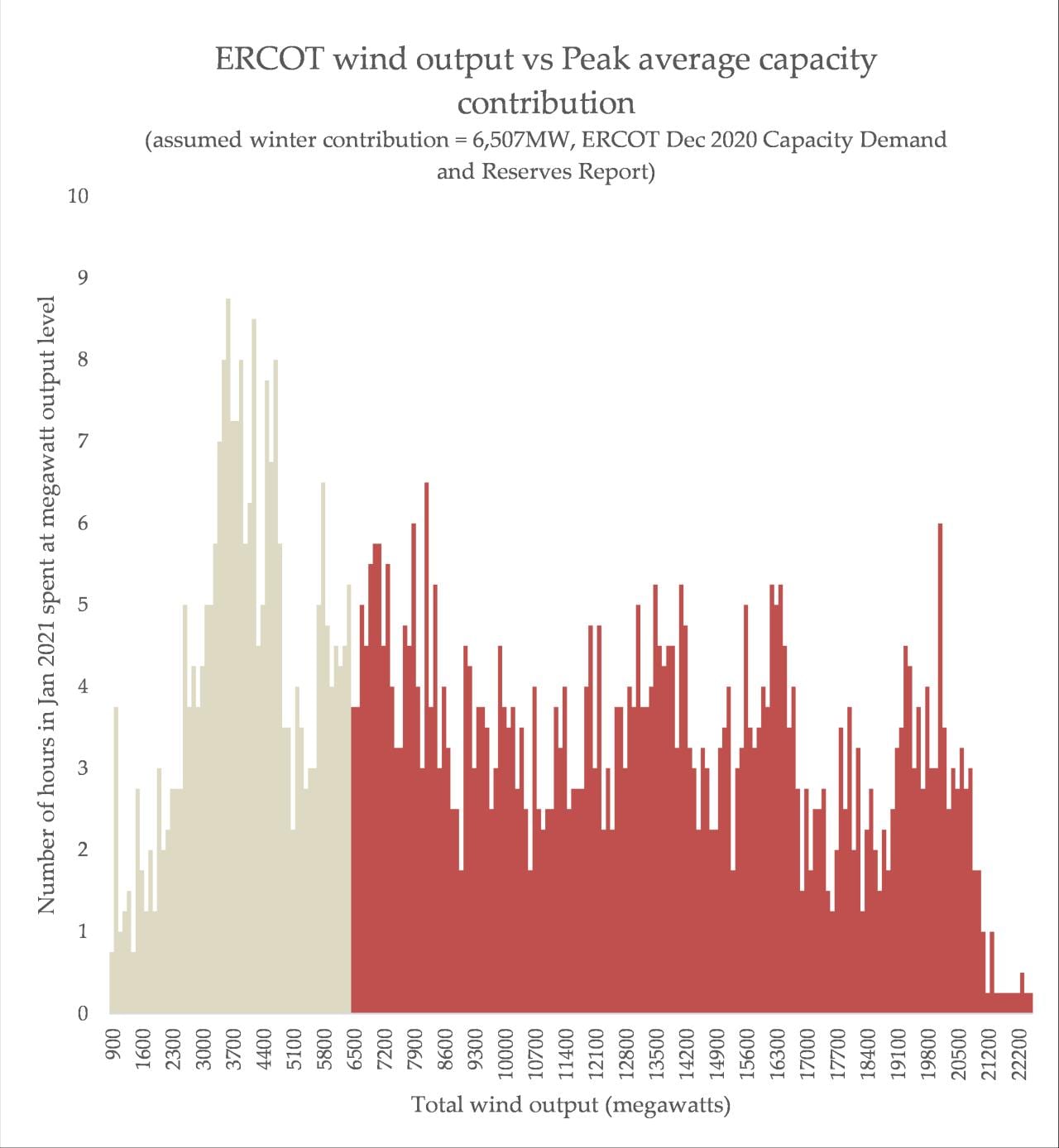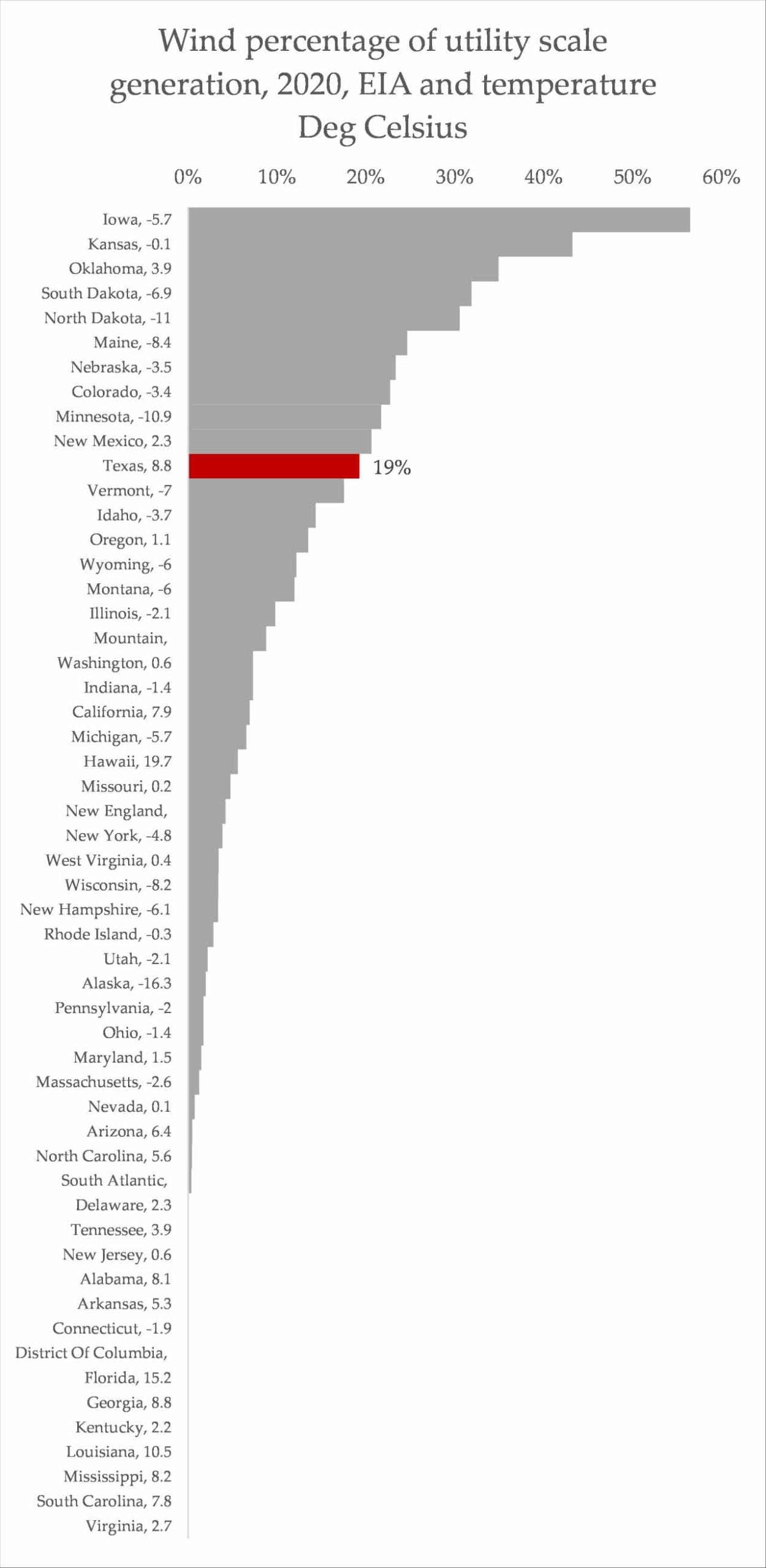After the initial flurry of news around a major blackout in Texas, in which many millions of people are still without power in freezing conditions, the misinformation war around the event has broken into full swing. American conservatives are going hard blaming renewables for the event, but buried underneath the noise, a clearer picture of what has gone wrong is emerging.
The first is an updated package of data from the American ‘Energy Information Administration’, or EIA. The data showing grid data updates irregularly, but now shows information up to the end of the day of the 16th of February, two days after the blackouts began.
First, we can see the very stunning scale of the shortfall in the supply of power, in Texas (the main grid, ERCOT, serves most power in the state). Over the duration of the 15th and the 16th, a total of 1,014,896 megawatt hours of load has been ‘unserved’. It is a shocking statistic.
The EIA also makes available generation data, and we can very clearly from that the massive, sudden drop in gas-fired power – nearly 7 gigawatts – at 2am on the 15th. Coal dropped by two gigawatts, and nuclear saw a small reduction later in the day. 
Wind – blamed by conservatives for the massive 20 gigawatt gap – saw its output decrease only very gradually, with no change in that trend at the moment of sudden decrease. On the 15th, solar power actually contributed far more than the previous days. At the time of writing, there are still 25 to 30 gigawatts of thermal power plants offline in Texas, deep into day three of the crisis. Though some plants have begun generating again due to increased fuel supplies, an interconnection has failed, resulting in those gains being cancelled out. “Some of [the restored load] was lost when the Midwest went into a power emergency of their own, and ERCOT was no longer able to import approximately 600 MW”, the grid operator said.
Wind power is forecast to increase over the course of the day, with another rise and fall tomorrow (US time). There has been little to no information about wind power issues from the grid operator or reputable sources; there is no clarity on what proportion of the fleet has been impacted by blade icing or low temperature shut-downs, and no historical information on how this has changed over time available on ERCOT’s data pages. In that void of information, a large amount of misinformation has spread.
There is information available for the full month of January, and it shows that for that month, both wind and solar played a significant role in the provision of energy, while the total supply was still dominated by coal and gas:
In fact, ERCOT’s ‘Seasonal Assessment of Resource Adequacy’ (SARA) for winter 2020/2021 assumes a wind capacity of around 6.5 gigawatts, out of a total installed capacity of 32 gigawatts. Even in their ‘low wind’ conditions, of 1.79 gigawatts, they predicted 1.3 gigawatts of wiggle room. For the month of January, wind was above the ‘expected’ 6,507MW for 68% of the month:
In fact, ERCOT’s “wind integration reports” show that the 30th of January 2021 saw wind power’s maximum output in the grid as a proportion, hitting 60.4% at 07:54. The 14th of January saw wind power’s maximum absolute output, at 22,893 megawatts at 07:27 (45% of total). It’s likely February will, as a whole, end up being a similarly good month for wind power.
While Texas’ wind fleet has generally been performing above the operator’s expectations so far this year, it’s also worth noting that Texas isn’t steaming ahead of other states in terms of wind power proportions. While it easily has the highest absolute amount of wind power of all the states, the proportion of total utility scale generation ranks 11th:
Iowa, which easily has more than double the proportion of energy coming from wind and has a winter low temperature of around -12 degrees Celsius, isn’t impacted by massive blackouts. In fact, every state with higher wind power reliance has a winter average temperature higher than Texas, most in the negative range – which suggests that the impact on Texas wind power wasn’t due to some inherent problem with the wind turbines in the cold, but the sheer severity and strangeness of the cold snap on wind turbines designed for much higher temperatures.
More information will come out on this, particularly on the sequence of events that have caused the failure of gas and coal plants. However, the event is still ongoing and the priorities for grid operators is restoring power. We can say with certainty this is a historic and significant moment, easily the worst blackout in the US on record and certainly one of the worst in the world. And it’s been met with an incredible flurry of misinformation.














